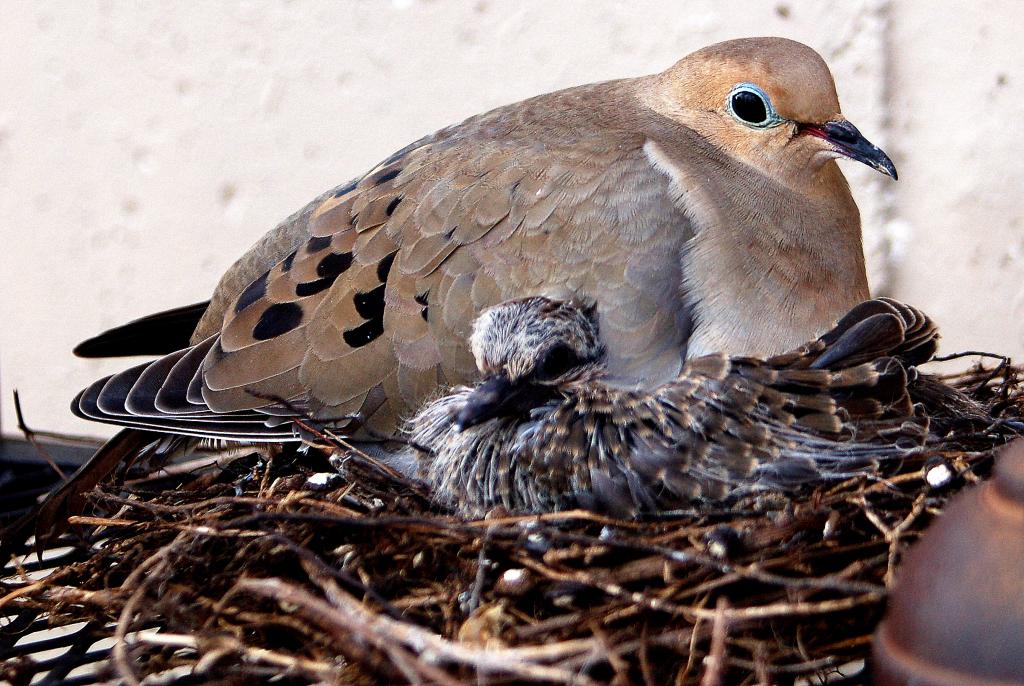I like the animals. I take note of all the critters that amble through our yard and I delight in the encounters. There’s something enchanting about it, as if I have unexpectedly bumped into the numinous.
We live in an urban subdivision in Kansas City, Missouri bounded by some major streets. Still, I have encountered a deer on the porch, peering in through the front door. Her two fawns were lazing on the lawn. My daughter driving home from school that day texted me to shoo the napping deer off the driveway so she could get in.
I have seen several walk down the middle of the street at 3 a.m.; adolescents looking for mischief is my guess. We find their tracks in the snow.
Driving the short 1.2 miles to the grocery I have observed deer, of course, but also fox, wild turkey, buzzards named for turkeys, rabbit, and, naturally, Canada geese. These are animals so habituated to suburban living cars dodge them, not the other way around.
Our back yard has hosted possum, raccoons under the deck, and rabbit. One of those ended up half eaten. I was fond of that one; we had watched it grow up over the summer. I left the carcass and in a day or two it was all gone. Oh, and a wood rat lived with us for a time one summer, strictly outdoors. It played well with the squirrels at the ground feeder.
For several years we had mourning doves nesting on the top shelf of an open cabinet. They were eye-level and our traffic pattern went right next to them. Male and female traded nesting duty but neither one would budge from the nest as we went by. We tried exchanging  pleasantries, but they never paid us any attention at all. I did give myself permission to sometimes stroke their tail feathers, which is how I learned a dove will growl low and insistently just before lashing out with its beak, and do that without abandoning the nest.
pleasantries, but they never paid us any attention at all. I did give myself permission to sometimes stroke their tail feathers, which is how I learned a dove will growl low and insistently just before lashing out with its beak, and do that without abandoning the nest.
Though the dog will chase squirrels ― and the squirrels give many indications they like being chased (why else would they hang around so enticingly close?) ― the dog will also rise to their defense against an intruding hawk. Squirrels belong to the dog and the hawk hasn’t been back. Interestingly, on a walk she ignores foreign squirrels and they ignore her. But in our back yard, they belong to each other and have achieved symbiosis.
One summer we raised orphan robin. It was a loud, voracious eater. Needing professional help, I took myself to a bait shop every two or three days for night crawlers. The robin fledged, learned to fly, and stayed around into the fall. When my wife was out weeding, though, it would occasionally flop down next to her and demand all the bugs and crawlies she could dig up. If she didn’t respond fast enough, the bird would peck at her bracelet.
This was the year for squirrels, though. Too lazy to build their own nests, a half dozen or so assumed squatters rights in the attic. “Squirrels in the attic” is not a metaphor, it is a mess. We called exterminators. The squirrels are gone but live trapping wasn’t an option and I do feel a sad for it, made all the worse by the bill I got.
It should not be thought unusual that we have an innate affection for animals, domestic and wild. Humanity was formed from the dust of the ground (Gen 2:7); so, too, were the animals (2:19). God’s breath of spirit animates humanity, though not the animals. Yet both are related to the dust of the earth and thereby divinely related as well, and just as clearly they are separate. In the Edenic account animals arose by God’s will because Adam was alone and needed helpers.
But then, so did the animals. Adam’s task was naming them. The force of the text suggests that God did not know their names until Adam named them: “[God] brought them to the man to see what he would name them.” Adam naming the creatures revealed them to God, and by naming the things of creation, Adam also assumed care and responsibility for them. The creatures revealed are Adam’s helpers in his loneliness, though not completely fit helpers until Man and Woman were given to each other.
Outside of Genesis some of our oldest myths say Man and Animal could talk together, and even cooperate: one giving life as food, the other marking the sacrifice given. Shamans painting cave walls, almost always depicting prey animals, simultaneously named an animal in their representations and at the same time, summoned it to give its life for humans.
Were the Yahwist writers and redactors of Genesis drawing on snatches of surviving memory from Paleolithic myth? I just speculate, that’s all, and hope the squirrels are really gone from the attic.
Russell E. Saltzman publishes every Tuesday and Thursday at noon Central Time. He can be reached on Twitter as @RESaltzman, on Facebook as Russ Saltzman, and by email: [email protected]
Photo: by the author












